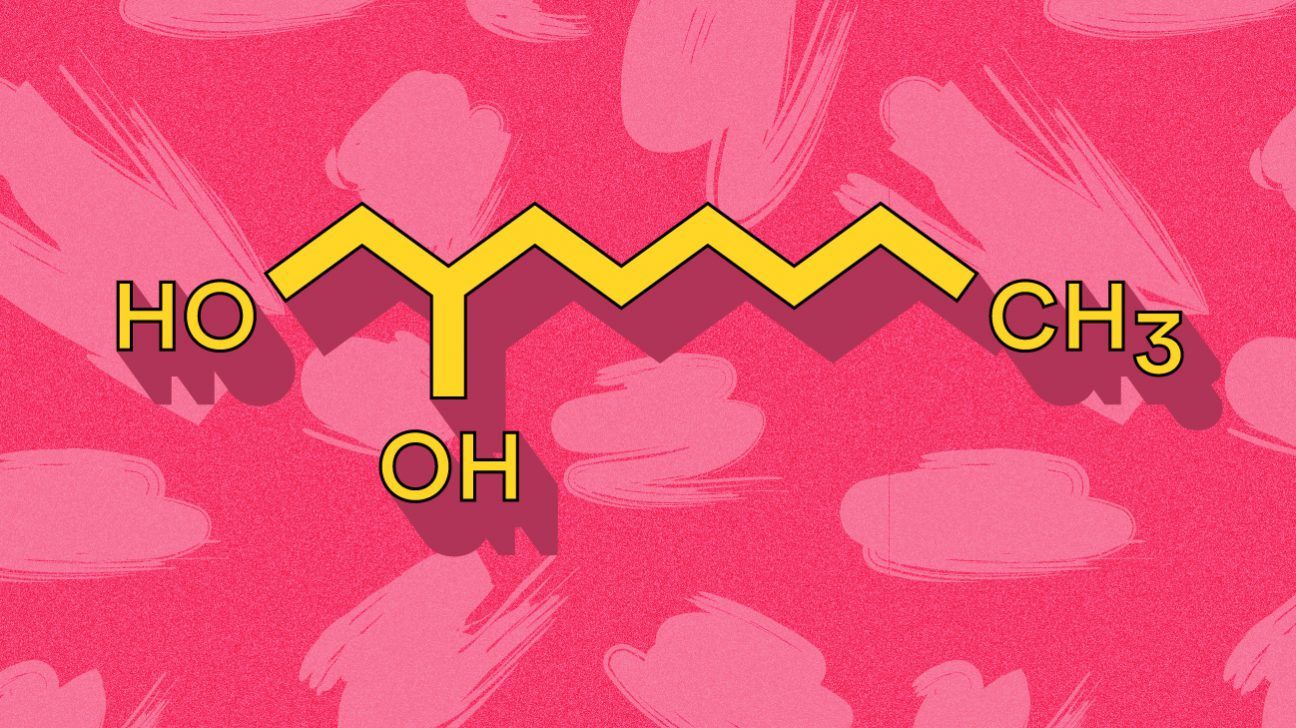Lots of folks are going au naturel with their beauty and skin care regimen (and with good reason!). Some of the stuff found in commercial cosmetics is scary.
But is caprylyl glycol in the clear? Here’s everything you need to know about this popular ingredient.
Caprylyl glycol 101
What is it? Caprylyl glycol is a type of alcohol that can be found in beauty products.
What does it do? Some possible perks include:
- antimicrobial properties
- helps emulsify products
- effective skin and hair moisturizer
- preserves products without the use of harsher chemicals
What products is it used in? You’ll find this ingredient in skin creams, hair care products, and cosmetics.
Is it safe? Caprylyl glycol is considered safe to use in cosmetics. But, some folks might experience irritation.

Caprylyl glycol (aka 1,2-octanediol) is an alcohol that’s found in lots of beauty and hygiene products. It’s derived from an eight-carbon saturated fatty acid called caprylic acid. It can be found naturally in coconut and palm oils along with some types of mammal milk.
Caprylyl glycol is so popular because it’s versatile AF. Here’s a deep dive into the potential perks for your skin.
Humectant
Caprylyl glycol is a humectant — a substance that draws water into the skin and helps retain moisture in the skin. That means caprylyl glycol might keep your skin hella hydrated. Bonus: It can do the same for your luscious locks *hair flip*.
Product texture
Caprylyl glycol is amphiphilic. That basically means it has hydrophilic (water) and lipophilic (fat) properties. This makes it ideal for emulsification and can make a product super-duper creamy. It also has a neutral scent and color so it won’t screw with the product’s OG formula.
Antimicrobial
Most skin and hair care products have a high water content. This makes them the perfect breeding ground for bacteria and fungus. Thanks to caprylyl glycol’s antibacterial properties, it can fight these unwanted critters off. This might reduce your risk of a breakout, but we need more research to show this is legit.
Preservative
Caprylyl glycol’s antibacterial properties can also increase a product’s shelf life. It’s considered a safer alternative to traditional preservatives like parabens and formaldehyde releasers.
Products with caprylyl glycol
Skin care products that contain caprylyl glycol often include:
- moisturizing face masks
- facial moisturizers
- eye creams
- sunscreen moisturizers
Yes! Lots of makeup brands use caprylyl glycol as a preservative and emulsifier. The same goes for hair care products. It’s uber common in:
- lipstick
- concealer
- foundation
- conditioner
- hair serums
What’s the deal with caprylyl glycol and phenoxyethanol?
Caprylyl glycol isn’t the only skin solvent on the block. Phenoxyethanol (aka glycol ether) is also super common.
Other popular preservatives include:
- methylisothiazolinone
- propylene and butylene glycols
- disodium and tetrasodium EDTA
- diazolidinyl and imidazolydyl urea
- tocopherol acetate (a vitamin E derivative)
Paraben PSA: Lots of commercial skin care products are chock full of parabens like polyparaben, methylparaben, and butylparaben. These additives might not be safe for long-term use. Some studies have linked them to breast cancer. They also can have a negative impact on the environment.
Caprylyl glycol is safe to use in cosmetics, according to the Cosmetic Ingredient Review (CIR) Expert Panel. Just keep in mind, no ingredient is 10/10 risk-free. Some peeps might experience skin irritation after use. Symptoms may include redness, itching, swelling, or hives.
You can avoid a rash or hives by doing a patch test. Just dab a bit on your inner arm and wait 24 hours. You should be good-to-go if you don’t notice any redness, swelling, or itching.
Caprylyl glycol is a popular additive found in skin, beauty, and hair care products. It can hydrate the skin and can help products last longer. It’s generally considered safe when used topically. But you should def do a patch test before trying any new skin care product to reduce your risk of irritation.

